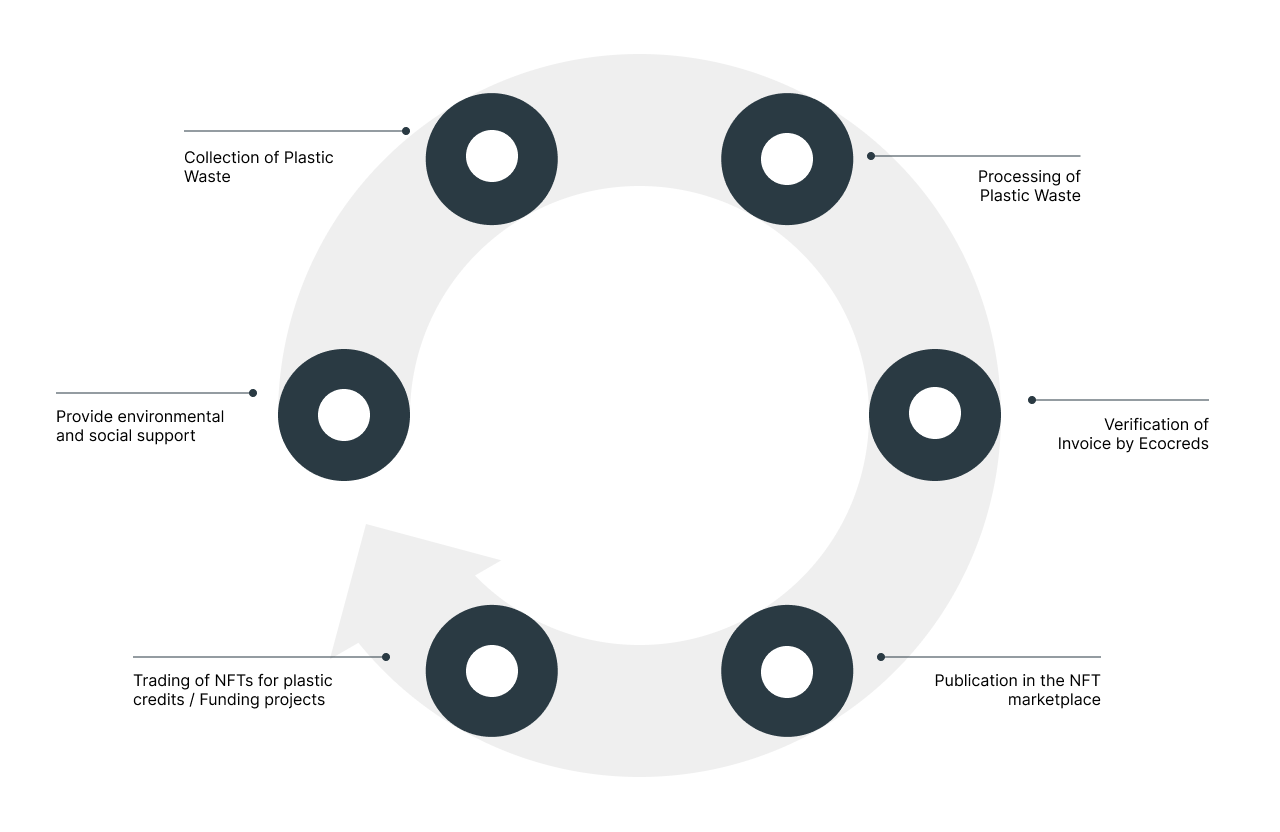GPOS NFTs and Plastic Credits
In the current environmental landscape, the commendable efforts of Waste Management Organizations (WMOs) often go unnoticed by the general public, despite their profound impact on everyday activities and the delicate balance of natural ecosystems. However, with the advent of plastic credits, we now possess a powerful tool to illuminate and validate every facet of this impactful work. This, in turn, provides a means for various stakeholders to measure and influence their environmental impact on a global scale.
ecoCreds, in its pioneering initiative, issues NFTs known as 'GPOS'—Global Plastic Offset Standards that are tied to these plastic credits. These NFTs transcend conventional certificates; they serve as tangible proof of the significant work carried out in various realms of plastic management. After each waste management cycle, an invoice is tokenized into these GPOS certificates/NFTs. Importantly, these digital certificates encapsulate detailed proofs generated throughout their respective waste management cycles, ensuring the authenticity of the recorded efforts.
Upon generation, these GPOS NFTs become publicly accessible on the profiles of the responsible WMOs. Through this transparency, WMOs can effectively:
- Communicate Impact Transparently: Share with the public the specifics of the work undertaken and its direct impact on mitigating plastic pollution. This transparency fosters accountability and awareness.
- Facilitate Direct Engagement with Brands: Brands, driven by a commitment to sustainability, can engage directly with WMOs to trade these NFTs. This exchange is not merely symbolic but a tangible manifestation of environmental responsibility. As brands acquire GPOS NFTs, they contribute directly to the plastic offsetting cause.
Now, let's delve into the critical connection between GPOS NFTs and plastic credits:
Connecting GPOS NFTs to Plastic Credits:
Our base measurement standard is 1 tonne of plastic waste = 1 plastic credit. This means that if a recovery project had recovered 100 tonnes of plastic through their recovery project, they would then mint a GPOS NFT that had the equivalent value of 100 plastic credits. These NFTs would also help communicate the story behind the acquisition, the work that has contributed towards its acquired value much more effectively than if it were simply a collection of plastic credits.
A symbiotic relationship is established as brands engage directly with WMOs to trade GPOS NFTs. Brands financially compensate WMOs for their impactful work and receive plastic credits in return. These plastic credits, grounded in the tangible efforts represented by GPOS NFTs, become a measurable and actionable metric for businesses striving to offset their plastic footprint.
In essence, GPOS NFTs bridge the gap between the intangible efforts of waste management and the tangible benefits for businesses seeking to participate in the reduction of plastic pollution actively. As these digital certificates find their way into the hands of environmentally conscious brands, a cycle of sustainability is forged, turning environmental responsibility into a collaborative and rewarding endeavor.
